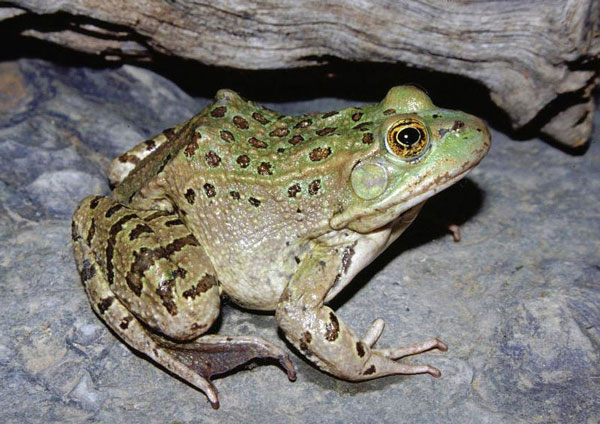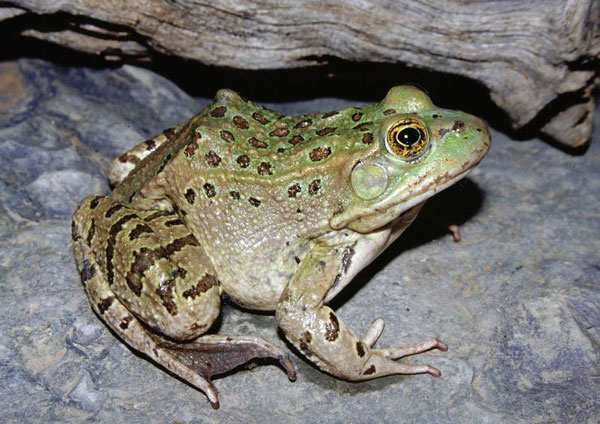The Chiricahua leopard frog is listed as vulnerable by the IUCN
Habitat of the Chiricahua leopard frog (Lithobates chiricahuensis) must be protected, and the U.S. Forest Service must reexamine its plans to allow cattle to graze near one of the frog’s habitats at Fossil Creek in Arizona’s Coconino National Forest, according to the Center for Biological Diversity.
Leopard Frog information
Chiricahua Leopard Frog Egg Masses Discovered at Eastern Arizona College Campus
Herping the Florida Leopard Frog
How Frogs Leap Amazing Distances

JIM RORABAUGH/USFWS
The Chiricahua leopard frog is listed as vulnerable by the IUCN.
The grazing plan submitted by the U.S. Forest Service did not take into account the streams, creeks, and other dispersal corridors that the frogs require in order to move from pond to pond, according to a lawsuit filed by the Center. The frog needs permanent water sources to survive, and if those corridors are damaged by grazing cattle, it would further imperil the the amphibian, which was listed as threatened in 2002 due to habitat loss, non-native predators and disease such as the chytrid fungus.
The Center claims that the U.S. Fish and Wildlife Service said in its report that grazing would not pose a threat to the frog. October 1 is the deadline for the service to submit a revised assessment. Until the assessment is revised, the U.S. Forest Service will not issue grazing permits near Fossil Creek, which is critical habitat for the frog.
The Chiricahua leopard frog is listed as vulnerable by the IUCN and is native to Arizona, New Mexico and Mexico. It can be found in temperate forests, rivers, swamps, freshwater lakes and marshes, as well as springs and ponds. It is threatened by both habitat loss and the chytrid fungus, with some estimating that it has been eliminated from 80 percent of its native habitat.
John B. Virata keeps a western hognose snake, a ball python, two corn snakes, a king snake, and two leopard geckos. His first snake, a California kingsnake, was purchased at the Pet Place in Westminster, CA for $5. His first pet reptile was a green anole that arrived in a small box via mail order. Follow him on Twitter @johnvirata


